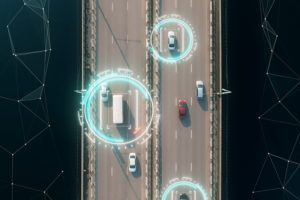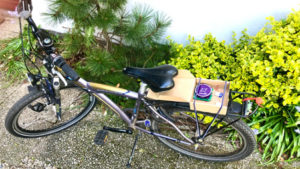Never lose anything again –
Lacuna Space leads the way in multi-technology global positioning
Combining IoT connectivity and geolocation via Lacuna Space with GNSS and WiFi scanning. Dramatically reducing battery consumption and complexity for geolocation applications by using a multi-technology chip. Complementing GNSS systems.
Space is full of exciting applications! But no other application has become as indispensable as GPS – or other systems like BeiDou in China or Galileo in Europe. We can call them all “GNSS” for Global Navigation Satellite Systems.
Imagine for a minute if GPS stopped working: How would people call an Uber and who’s using paper maps these days? Financial transactions using its accurate timestamping would also come to a halt. In the UK alone losing GNSS just for 5 days would impact the economy by £5.2bn.
There is simply an insatiable demand for tracking objects. IoT analytics estimate that by 2025 there will be over 600 million tracking units using LPWAN (low power wide area network) technologies, with an expected global asset tracking market worth $36.3B.
As much as GPS is an amazing system, it has a few limitations when used in isolation. Especially with battery powered devices, it can consume significant power, it can’t work indoors and its location reporting is only as good as the availability of a communication network needed to transmit the location info. Read on to see what we can do about these!

Slashing power consumption for Geolocation
Most of us may have an abstract idea of how GPS works, somewhere in space! The reason for the relatively high-power consumption lies in the setup. For a device to know where it is, it has to receive several bits of information for an extended duration from several GPS satellites 20,000km above Earth, which are transmitted over several communication channels and at low connection speed of 50 bits per second. The entire process can take up to 12 minutes and the device cannot enter a sleep state, all contributing to battery drain.
A new revolutionary multi-technology chip, the LR1110, has shown to slash power consumption and as IRNAS have shown, not compromising geolocation accuracy.
How does this work? By splitting the parameters and power consumption needed to calculate coordinates between the device on the field and the cloud. After receiving only a portion of the signals from the navigation satellites, the device sends a “NAV” message to the cloud over LoRaWAN®. The cloud solver receives the message, determines the location and can forward the information to wherever it is needed.

Indoor to Outdoor: All in one chip
Apart from the GNSS scanner and the IoT transceiver the LR1110 also does Wi-Fi scan-ning. This means that the same chip can determine location while indoor or wherever else a suitable WiFi network is available!
What happens when you do not have IoT network coverage? Using the same standard electronics and regional frequency bands as standard LoRaWAN® the same tracking device will be able to securely determine its position from indoor (WiFi) to outdoor (LoRaWAN®) and Everywhere (satellite). As well as its position, a device can also com-municate other information over satellite or ground networks, such as temperature or humidity in a cold chain.
Why does it all matter ?
Our service will not replace Positioning and Navigation Systems such as GPS. But there is a myriad applications in tracking and asset management, that only require position and state information every few hours. Eliminating a GPS chip on a device that does not need persistent location will cut battery life by years. For such applications not having to replace batteries for years while providing seamless, secure connectivity Everywhere will be an absolute game changer!
Find out more from our partners:
Webinar on the integration with the Chirpstack LoRaWAN server and antennas by RFThings

